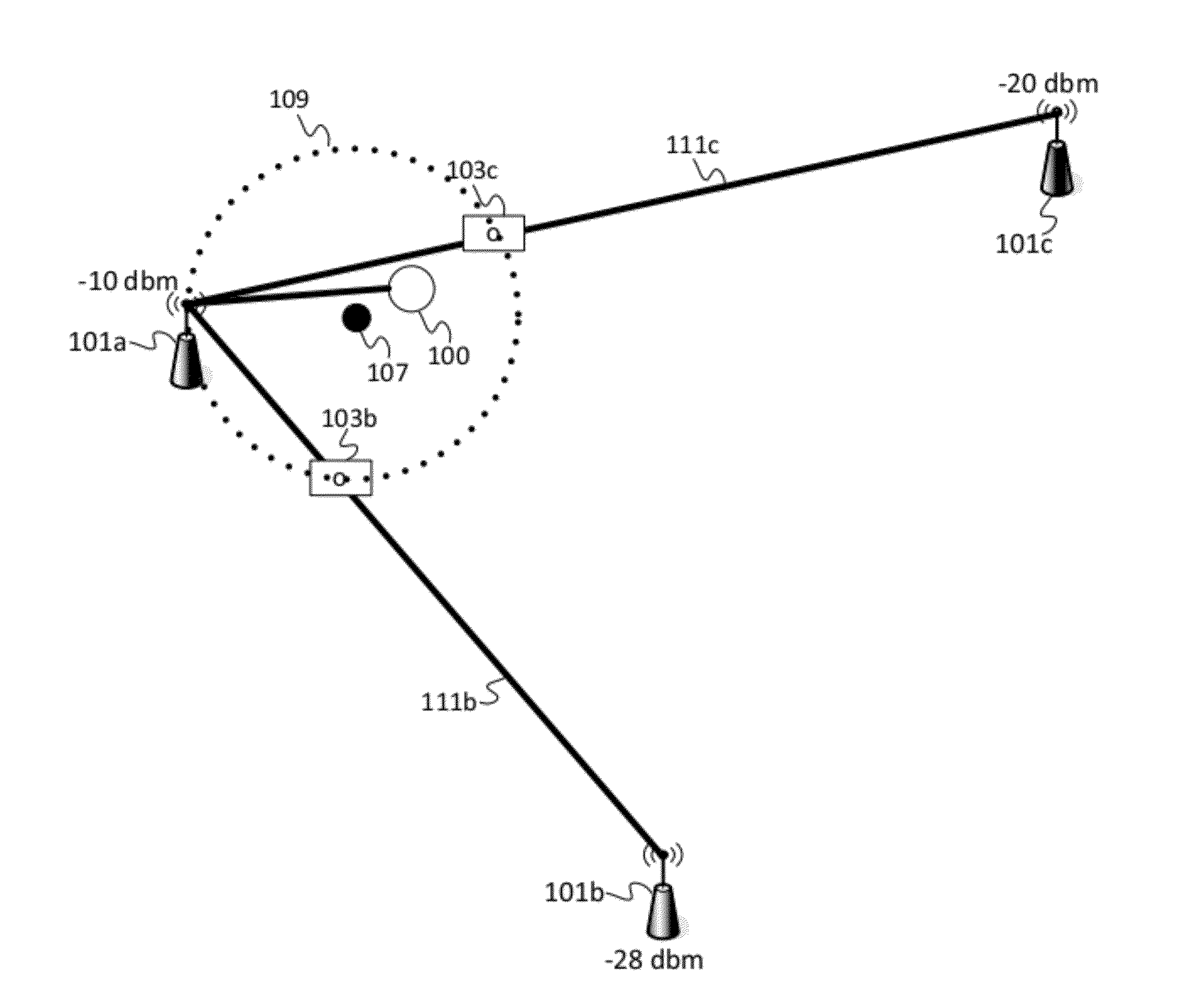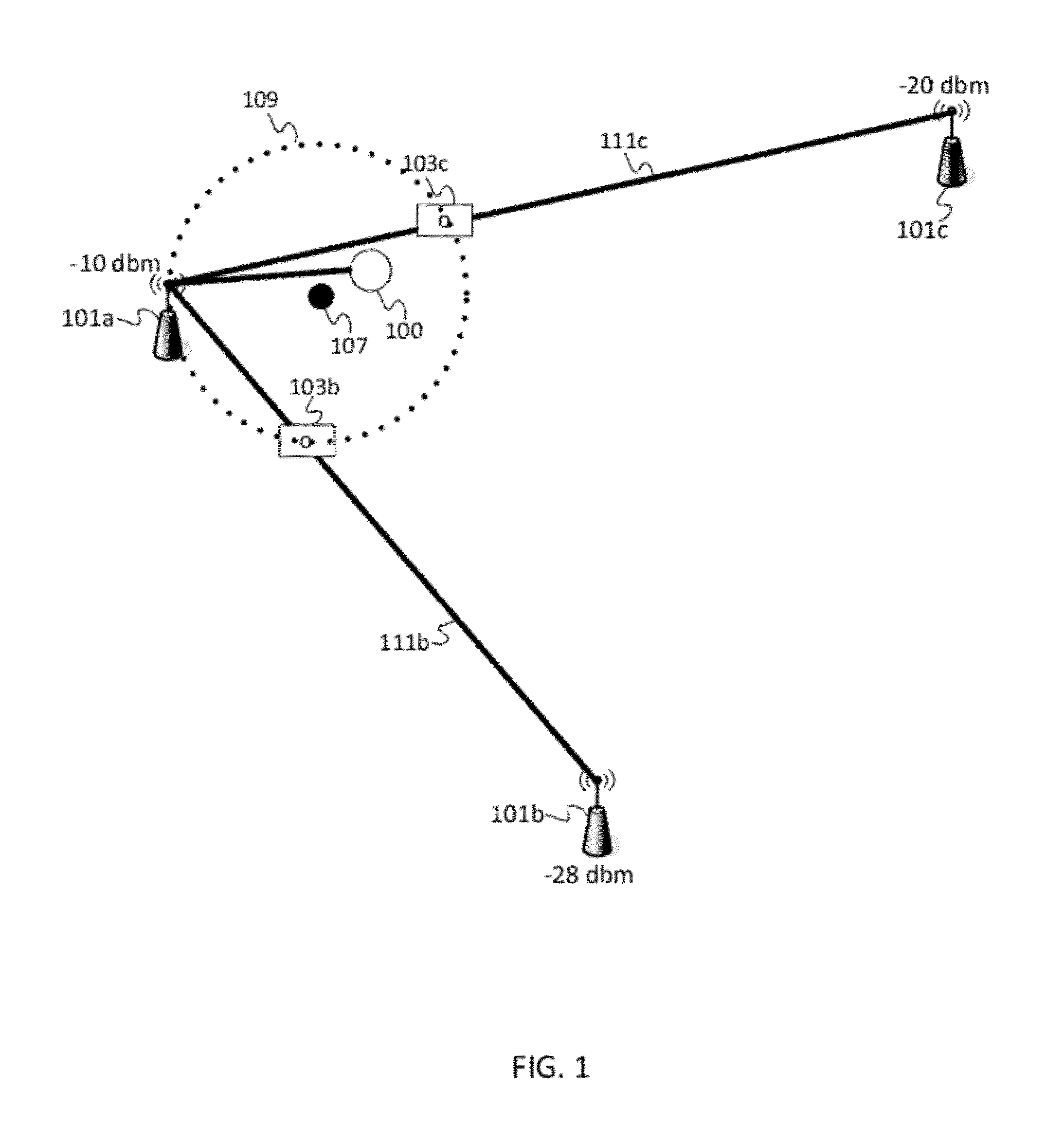Location tracking
a technology of location and tracking, applied in the field of location tracking, can solve the problems of human body, inability to implement universal mapping algorithms to account for the differences between device types, and time-consuming calibration phas
- Summary
- Abstract
- Description
- Claims
- Application Information
AI Technical Summary
Benefits of technology
Problems solved by technology
Method used
Image
Examples
first embodiment
[0033]In the first embodiment, the navigation device 100 may be an RF tag, which is a low cost device that receives signals from the access points 101a-c. The RF tag is a low-energy, embedded system, which may comprise a processor, and a memory storing a protocol stack such as Wi-Fi or Bluetooth low energy (Wife Tag or Bluetooth Tag). The RF tag may receive signal strength data and report the signal strength data to server 120. In this scenario, the server 120 determines the location of the RF tag through communication with the RF tag and may then communicate with the user through another wireless device via text message, email, or another application.
second embodiment
[0034]In the second embodiment, the navigation device 100 performs more of the analysis in the location tracking algorithm. For example, the navigation device 100 may receive signal strength from the access points 101a-c and compare the signal strength to identify the anchor access point and the attractor access points. The navigation device 100 may send an instruction to server 120 to access database 130 for locations of the anchor access point and the attractor access points. The navigation device 100 calculates the pull points between the anchor access point and the attractor access points and estimates a location of the navigation device 100 by averaging the locations of the pull points and the location of the anchor access point.
third embodiment
[0035]In the third embodiment, all instructions for location tracking in the radio space are found on the navigation device 100 and no connection to the network 110 is necessary. The navigation device 100 includes a database with the locations of the access points.
[0036]FIG. 3 illustrates an example of server 120, which may be used in the first embodiment or the second embodiment. The server 120 includes a server controller 300, a communication interface 305 and a memory 301. The server 120 may be in communication with database 130.
[0037]The communication interface 305 may receive the signal strength data of the access points 101a-c from the navigation device 100. The signal strength data may be calculated based on a packet conforming to the 802.11 or Bluetooth standards. For example, the Bluetooth low energy (BLE, 802.15.1, or Bluetooth 4.0) protocol utilizes a small packet size (60-70 bytes) and provides the signal strength data in units such as dbm. The power consumption in BLE, ...
PUM
 Login to View More
Login to View More Abstract
Description
Claims
Application Information
 Login to View More
Login to View More - R&D
- Intellectual Property
- Life Sciences
- Materials
- Tech Scout
- Unparalleled Data Quality
- Higher Quality Content
- 60% Fewer Hallucinations
Browse by: Latest US Patents, China's latest patents, Technical Efficacy Thesaurus, Application Domain, Technology Topic, Popular Technical Reports.
© 2025 PatSnap. All rights reserved.Legal|Privacy policy|Modern Slavery Act Transparency Statement|Sitemap|About US| Contact US: help@patsnap.com



